<< Our Photo Pages >> Grotte de Lascaux - Cave or Rock Shelter in France in Aquitaine:Dordogne (24)
Submitted by TheCaptain on Friday, 15 May 2009 Page Views: 25852
Natural PlacesSite Name: Grotte de LascauxCountry: France
NOTE: This site is 0.626 km away from the location you searched for.
Département: Aquitaine:Dordogne (24) Type: Cave or Rock Shelter
Nearest Town: Sarlat-la-Canéda Nearest Village: Montignac
Latitude: 45.053300N Longitude: 1.170700E
Condition:
| 5 | Perfect |
| 4 | Almost Perfect |
| 3 | Reasonable but with some damage |
| 2 | Ruined but still recognisable as an ancient site |
| 1 | Pretty much destroyed, possibly visible as crop marks |
| 0 | No data. |
| -1 | Completely destroyed |
| 5 | Superb |
| 4 | Good |
| 3 | Ordinary |
| 2 | Not Good |
| 1 | Awful |
| 0 | No data. |
| 5 | Can be driven to, probably with disabled access |
| 4 | Short walk on a footpath |
| 3 | Requiring a bit more of a walk |
| 2 | A long walk |
| 1 | In the middle of nowhere, a nightmare to find |
| 0 | No data. |
| 5 | co-ordinates taken by GPS or official recorded co-ordinates |
| 4 | co-ordinates scaled from a detailed map |
| 3 | co-ordinates scaled from a bad map |
| 2 | co-ordinates of the nearest village |
| 1 | co-ordinates of the nearest town |
| 0 | no data |
Internal Links:
External Links:
I have visited· I would like to visit
robinio visited on 1st Jan 2016 - their rating: Cond: 4 Amb: 5 Access: 5
rrmoser visited on 21st Nov 2014 - their rating: Cond: 5 Amb: 4 Access: 5
ModernExplorers visited on 28th Mar 2006 - their rating: Cond: 4 Amb: 5 Access: 4 Brilliant cave system full of rock art - something like 60% horses
TheCaptain visited on 20th May 2005 This world famous cave has not been opened for visitors since about 1962 after the paintings had started to seriously deteriorate. It was found in September 1940 by two boys out walking their dog which fell down a hole underneath the roots of a freshly uprooted tree. It is now fenced off and not even opened up to specialist groups since 2001. The fence of course has its UNESCO World Heritage site plaque proudly on display.
Average ratings for this site from all visit loggers: Condition: 4.33 Ambience: 4.67 Access: 4.67

The Lascaux paintings are thought to be 15,000 to 17,000 years old. The early Europeans who roamed this region used crushed minerals to create some 600 images in red, ochre, deep brown and black. The array of vivid horses, bulls, stags, ibexes and oxen, some resting while others gallop, charge and leap are considered among the finest examples of Paleolithic cave art.
After World War II, the small cave was opened to the public and, at one point, it was receiving as many as 1,800 visitors per day. But by the late 1950s, the visitors’ breath was blamed for the appearance of lichen and small crystals on the walls, prompting the government to close Lascaux to the public in 1963.
Since then, only a select few people have been allowed to visit the underground gallery by special permission, and tourists are steered into a replica of the cave complex nearby. The replica, known as Lascaux II, opened in 1983 and now draws more than 250,000 tourists each year.
Note: Scientists meet to save Lascaux cave from fungus, see latest comment on this page. Fungus becoming resistant to biocide?
You may be viewing yesterday's version of this page. To see the most up to date information please register for a free account.







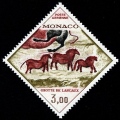



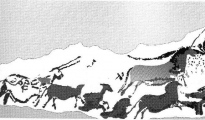
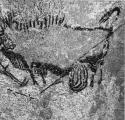


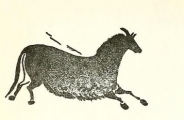

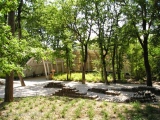

Do not use the above information on other web sites or publications without permission of the contributor.
Click here to see more info for this site
Nearby sites
Click here to view sites on an interactive map of the areaKey: Red: member's photo, Blue: 3rd party photo, Yellow: other image, Green: no photo - please go there and take one, Grey: site destroyed
Download sites to:
KML (Google Earth)
GPX (GPS waypoints)
CSV (Garmin/Navman)
CSV (Excel)
To unlock full downloads you need to sign up as a Contributory Member. Otherwise downloads are limited to 50 sites.
Turn off the page maps and other distractions
Nearby sites listing. In the following links * = Image available
269m W 277° Grotte de Lascaux 2* Cave or Rock Shelter
605m N 353° Lascaux 4* Museum
658m ENE 75° Le Rigourdou* Cave or Rock Shelter
4.2km WSW 242° Musée de Thot Cave or Rock Shelter
6.5km SW 229° Belcatre-Hault Cave or Rock Shelter
8.1km SW 222° Abri Castanet Cave or Rock Shelter
8.1km SW 223° Abri Reverdit Cave or Rock Shelter
8.2km NE 39° Polissoirs de Condat sur Vézère* Polissoir
10.9km SW 233° Abri du Moustier* Cave or Rock Shelter
10.9km SW 229° La Roque-Saint-Christophe* Ancient Village or Settlement
11.6km SW 233° Abri de Ruth* Cave or Rock Shelter
11.8km NNW 349° Grotte du Peyrat Cave or Rock Shelter
12.4km SW 227° Grotte de La Forêt Cave or Rock Shelter
12.5km NE 50° Grotte de Saint-Sours Cave or Rock Shelter
12.8km SSW 203° Abri de Laussel* Cave or Rock Shelter
13.3km SSW 206° Abri du Cap-Blanc* Cave or Rock Shelter
13.4km NNE 28° Menhir de Beauregard de Terrasson* Natural Stone / Erratic / Other Natural Feature
13.5km SSW 204° Grotte de Commarque* Cave or Rock Shelter
13.5km SSW 208° Abri de la Grèze Cave or Rock Shelter
14.4km SW 229° Village de la Madeleine* Ancient Village or Settlement
14.5km SW 229° Source de la Madeleine* Holy Well or Sacred Spring
14.6km SW 230° Abri de la Madeleine* Cave or Rock Shelter
15.1km SW 214° Roc de Cazelle* Ancient Village or Settlement
15.2km WSW 251° Grotte de Rouffignac* Cave or Rock Shelter
15.4km WSW 258° Menhir de La Rue* Natural Stone / Erratic / Other Natural Feature
View more nearby sites and additional images



 We would like to know more about this location. Please feel free to add a brief description and any relevant information in your own language.
We would like to know more about this location. Please feel free to add a brief description and any relevant information in your own language. Wir möchten mehr über diese Stätte erfahren. Bitte zögern Sie nicht, eine kurze Beschreibung und relevante Informationen in Deutsch hinzuzufügen.
Wir möchten mehr über diese Stätte erfahren. Bitte zögern Sie nicht, eine kurze Beschreibung und relevante Informationen in Deutsch hinzuzufügen. Nous aimerions en savoir encore un peu sur les lieux. S'il vous plaît n'hesitez pas à ajouter une courte description et tous les renseignements pertinents dans votre propre langue.
Nous aimerions en savoir encore un peu sur les lieux. S'il vous plaît n'hesitez pas à ajouter une courte description et tous les renseignements pertinents dans votre propre langue. Quisieramos informarnos un poco más de las lugares. No dude en añadir una breve descripción y otros datos relevantes en su propio idioma.
Quisieramos informarnos un poco más de las lugares. No dude en añadir una breve descripción y otros datos relevantes en su propio idioma.